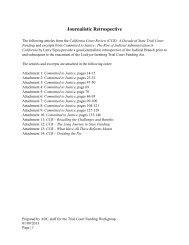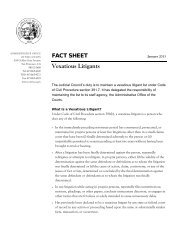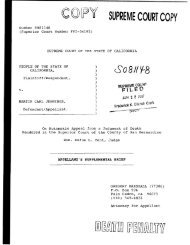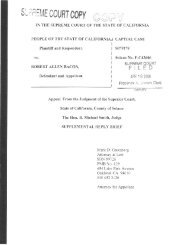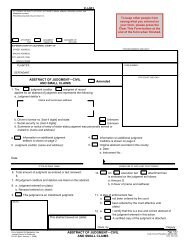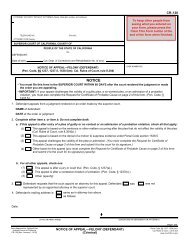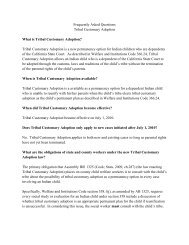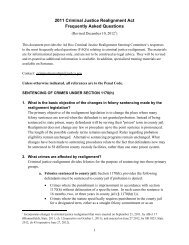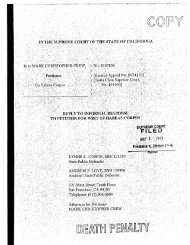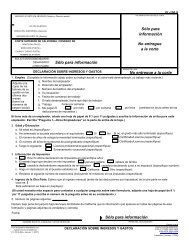Appellant, William Satele, Reply Brief - California Courts - State of ...
Appellant, William Satele, Reply Brief - California Courts - State of ...
Appellant, William Satele, Reply Brief - California Courts - State of ...
Create successful ePaper yourself
Turn your PDF publications into a flip-book with our unique Google optimized e-Paper software.
impasse, and that it was important that the trial court make the necessary inquiry.<br />
The trial court refused all requests for further inquiry. On each <strong>of</strong>these occasions,<br />
the trial court responded to counsel's comments with a restatement <strong>of</strong> its ruling,<br />
which appellant has set forth in the following section.<br />
For the purposes <strong>of</strong> the present discussion, however, the point appellant<br />
makes is that the record shows to a demonstrable reality that Juror No. 1D's<br />
responses to the court's inquiry, the jury foreperson's responses and notification <strong>of</strong><br />
impasse, and the temporal proximity <strong>of</strong> the events created a confusion as to the<br />
status <strong>of</strong> the penalty verdict, and that the trial court refused the repeated requests<br />
to have the matter clarified. On the other hand, the record very clearly does not<br />
support to a demonstrable reality respondent's contention that Juror No. 10 caused<br />
the jury to change its unanimous vote for the death penalty to a 10-2 deadlock.<br />
Accordingly, this flawed factual construction must be rejected.<br />
2.The Trial Court's Various Restatements Of Its Ruling<br />
Barnwell explained that under the demonstrable reality standard the<br />
reviewing court must be assured that the trial court's conclusion is manifestly<br />
supported by the evidence upon which the court actually relied. The reviewing<br />
court therefore must consider not only the evidence, but also the record <strong>of</strong>reasons<br />
provided by the trial court. (People v. Barnwell, supra, 41 Ca1.4th at p. 1053.)<br />
In this case, the trial court provided multiple restatements <strong>of</strong> its ruling.<br />
These restatements show that although the court initially concluded Juror No. 10<br />
had committed misconduct by discussing the case with nonjurors, in its final<br />
restatement <strong>of</strong> its ruling, the court found Juror No. 10 had committed misconduct<br />
because she had been influenced by outside sources. <strong>Appellant</strong> reproduces the<br />
court's articulations <strong>of</strong> its ruling below. The record <strong>of</strong> reasons provided by the<br />
court are not supported by the evidence to a demonstrable reality.<br />
Following the hearing with Juror No. 10, summarized in the opening brief<br />
(AOB 264-268), the defense asked the court to inquire and clarify whether the jury<br />
136



